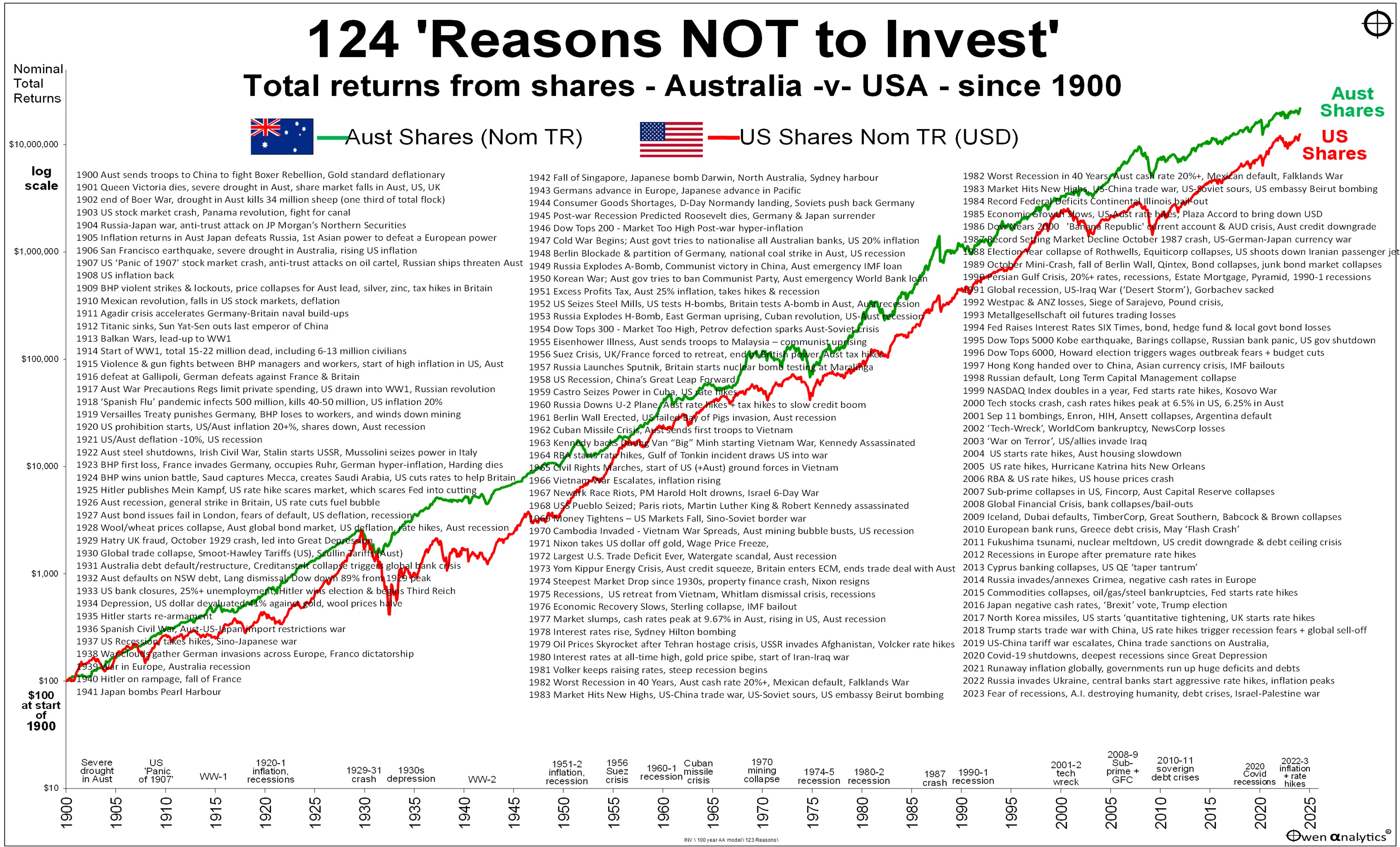Forum Replies Created
-
AuthorPosts
-
Up::0
Hi Geremy,
RPMGlobal is a business Owen covered in Rask 1.0, and also one that I have held personally since 2020 (for full disclosure).
In my opinion it’s one of the better expressions of getting exposure to the Aussie mining industry (via software & their advisory/consulting divisions), without getting into the far more capital intensive business models being a producer and/or an explorer.
It has grown its cashflows at a consistent clip, particularly as its transitioned its main software suites to a SaaS model, and then into cloud from perpetual licenses.
I’d keep my eye on Total Contract Value’s (TCV) growth – which are RPM’s non-cancellable, pre-contracted software subscription revenue and also how the numbers track outside of Australia too.
On a more wary tone, I’d also lookout for management incentive costs. CEO Richard Matthews does have heaps of skin in the game, and has also done an amazing job driving this business as a non-founder, but while great teams and performance should be rewarded, these are still very real costs.
Hope these points help!
-Kev
Disclosure: Kevin owns shares of RPMGlobal and will continue to hold.
ps. another side note, hopefully RPM doesn’t follow the recent path of smaller Aussie companies being taken private. Almost all of RPM’s primary competitors aren’t publically listed anymore, and it would be sad to see RPM go down a similar road.
Up::0Hi Fraser,
It’s an interesting topic you bring up. I think it would really depend on each persons own investment objectives and circumstances.
I know some investors who are happily in the camp of low cost, market rate of return. They usually have a regular dollar cost averaging strategy and typically set and forget.
While there are others who are really hunting that alpha or overperformance above the standard benchmark.
There’s been numerous studies to show that most managers fail to beat the big index’s, particularly after fees. So you’re point is spot on.
The main reasons why beating something like the S&P500 is so hard, is because these index’s are a really high bar in terms of long term performance. Managers then also need to time the market and have a much higher cost base. Typically costing investors 1%+ p.a. for management fees and then typically another 20% on any outperformance if they beat the market. Both these fees eat away at most of the alpha that is generated.
With that said though, there are some very talented investors and firms out there, that can and do consistently outperform. My experience would suggest these are probably more the exception than the rule.
I’d be looking out for an investment strategy that can be executed year after year, particularly in the years of lower or even negative returns. This means that they are outperforming when times are tougher and not just in bull market periods.
Also consider the overlap of their outperformance to your own core strategy too. If the managers holdings mirror a lot of the great performance for the index then you may be doubling up.
Another point to consider too, is that some of these great managers like to keep their FUM small, and often close their funds for new or additional investment when they reach a certain size. This is because it becomes degrees harder to outperform if you are managing larger and larger pots of wealth.
Hope this helps
– Kev
April 2, 2024 at 8:18 am in reply to: Super Account – Standard Index Funds or Buy ETF Directly? #20869Up::0Great points SLT, industry funds to provide opportunities to invest in alternative assets which typical privately managed SMSFs would be unable to access.
Additionally, with those less liquid assets like private equity or infrastructure projects, investors should keep in mind their unit pricing may sometimes be updated less frequently (vs daily priced assets like shares). This often may also lead to them appearing less volatile too.
Up::2Hi all,
Came across a couple of articles over the weekend which took a deeper dive into investing when markets reach new heights, and also tuning out from most “news” events.
https://www.owenanalytics.com.au/17-1-2024-124-reasons-not-to-invest
Couple this with Ben’s and Owen’s post above, the research suggests that the right balance is typically mostly invested, with a cash buffer to cover life and unexpected events. This means investors capture most of the markets progress and returns, but also have some spare cash on the side to take advantage if Mr. Market goes on sale.
It’s also cruicial to understand that even the best investors will inevitably make some mistakes along the journey. But zooming out and looking at the bigger picture, it’s essential not to let the fear of permanent loss of capital, overpower the risk of not being invested in great businesses over a long period of time.

Charts like these always help bring back the optimist in me.
-
This reply was modified 1 month, 4 weeks ago by
 Kevin Fung.
Kevin Fung.
March 18, 2024 at 1:26 pm in reply to: Super Account – Standard Index Funds or Buy ETF Directly? #20772Up::1Hi Peter,
Thanks for your post and it looks like you may be after some some more personalised financial advice. Unfortunately, this is an area we can’t stray into, but I can offer some general suggestions.
It sounds like you might be after some greater control and/or flexibility over your investments, so it might be worth considering a Self-managed super fund (SMSF).
Some experienced investors prefer this route, but your own decision will depend on your investment objectives, financial situation and needs. As well as weighing up added responsibilities, including compliance with regulations, increased costs and administrative tasks.
Unfortunately, I haven’t used either Hostplus or the Choiceplus platform, so can’t comment on these. Perhaps some of our other members have and they can weigh in?
With some of your other questions, we would recommend probably having a chat with an accountant and/or financial adviser who can carefully consider your investment goals, risk tolerance, and time horizon.
Cheers,
Kevin
Up::0Hi Dan,
Great topic to open the discussion on getting better exposure outside of the two big core markets being Aus and the USA.
The key points to discuss here would be the return profile you are seeking as an investor, and then secondly the volatility + correlation risk you are comfortable with.
Certain ETFs will give great exposure to all of the above, and can be managed in a low cost manner. Rask’s goal is to get the right mix of diversifcation + growth.
A significant factor for the larger weightings towards the Aus and the U.S., comes down to the relative stability, growth and risk profile of both markets.
Things like economic, political and currency risk tend to big impacts when you’re investing for the long term. These stable environments can let great businesses grow consistently at a solid clip over time. Think of them like having great soil for your fruit trees.
We feel that Rask Core’s current make up gives a balanced approach where the ETFs capture the bulk of what we call the “All-Star” businesses and market leaders. The magic of these ETFs is that they capture the majority of the value created by these great busineses, because they produce such strong margins and free cash flow.
Ben’s fantastic post above, also highlights the fact that many US companies currently generate profits from international markets too. People in Europe and Asia are still buying iPhones, Googling, scrolling on Instagram and buy things off Amazon. So while they might be only listed in the U.S., they are very much kicking goals all over the globe.
Yes, we may not be currently geting direct exposure to some top drawer businesses like ASML, LVMH, or Novo Nordisk; but Rask’s FEMX allocation does mean we have indirect ownership of things like TSMC and Samsung Electronics. One thing to note here is that we are conscious of getting the right mix growing businesses in strong markets, and do so without costing us an arm and a leg. We didn’t feel there was a European option that ticked all of these boxes, primarily due to diworsification and owning bigger basket of 2nd, 3rd or even 4th rated businesses.
Cheers,
KevUp::0Hi Simmotcs,
Gambling? C’mon. The only punts we take at Rask is on the footy field haha.
But onto Palantir, its not a business I’ve covered before, but here’s some notes from my quick look at the business.
It looks like an interesting software business that specialises in data and analytics, with key government customers.
- Revenue growth has been consistent and fairly strong. Since listing it has always delivered double digit growth with some huge years of 40+% in 2020 and 2021! I’d be looking more into who, how long and sticky, and if these contracts were concentrated.
- Palantir’s gross margin has also been expanding nicely as it scales too, and now touches 80%.
- The business is reinvesting heavily into itself, with sales and marketing expenses around 33% of its top line, while R&D expenses are just over 18%
- Despite this reinvestment, the income statement has also ticked over into profitability this year, recording $217m of net income. And probably a big reason why shares have popped recently.
- The balance sheet looks clean with $3.7bn in cash and no debt.
- Shares have been on a strong run, up +193% in the last year, but still yet to recover from its Covid highs.
- A few things I’d keep an eye out on is Palantir’s corporate governance in terms of ownership and stock-based compensation. Over the past 4 years its management team has issued itself over $3bn worth of shares. This is despite only making a combined $6.76bn in total revenue (and thats before any expenses!). This is probably one of the highest I have ever come across, and doesn’t exactly scream that this business is being run for its shareholders.
- It also looks like these insiders have recently sold a bunch of shares, around $13m.
- With its market cap today at $52bn vs $217m of net income (so a PE of 261x) and operating cash flow of just under $700m (74x), means the multiple the market is assigning the business today is already baking in some very, very strong growth well into the future.
Cheers,
Kev
Up::1G’day all, our new Altium post is now up.
You can find the link here: https://etf.rask.com.au/updates/altium-asx-alu-the-story-of-a-2100-return/
Up::1Hi Jack, we’re working on a piece for Altium and my story as a long-term shareholder.
Members will be able to catch it soon in the Rask Satelitte area in the coming weeks 🙂
-
This reply was modified 3 months ago by
 Kevin Fung.
Kevin Fung.
Up::1Hi Tom,
Great question and it’s one that probably doesn’t have a perfect, or indeed a one-size fits all answer, unfortunately. Mainly due to the difficulty with forecasting and how each business is different.
The beauty of young, (and typically not yet profitable), fast-growing companies is the hyper-growth rates they can capture in those early years. Sometimes these can be a growth-at-all-costs strategy, where they are trying to capture a dominant market share. While for others it can be a true competitive advantage in a totally new market.
What we’ve noticed with those that have a genuine competitive advantage, is that sometimes these all-stars in the making often flirt with break-even, or show glimpses of profitability. This could mean that the business model is strong, and while it isn’t profitable yet on the income statement, perhaps the cashflow statement is showing some positive signs.
Looking at this through the lens of long term investing, you’re searching for businesses with not just a strong business model and great unit economics, but also one that has a very long runway for reinvestment. This means any free cash flow the business is earning, can be put back into the business to compound returns.
For example, a Software as a service (SaaS business) may know the cost/benefit of a new marketing strategy to acquire new users. Meaning they are happy to spend big dollars upfront to get new users into the product. While years 1-3 might mean making a loss, if these new users stay with the business for 10+ years, then that’s where the business will generate big margins.
Or in a simpler example, a direct to consumer goods company may know the cost/benefit of running a new online social media campaign and the relative conversion rate to sales.
Switching gears to your DCF or model, would mean forecasting out numbers to a point where you believe the business hits a possible inflection point. Perhaps marketing and advertising expenses start to taper down or reduce as a smaller % of overall sales. Or if other expenses and spend are currently at abnormally high levels, these are reduced in later years as the business matures.
You could also compare the company that is not yet profitable to others in another country, or similar industry verticles to compare and analyse.
If you’re interested in digging deeper, a great resource on this topic is Superforecasting: The Art and Science of Prediction by Philip E. Tetlock and Dan Gardner.
https://www.amazon.com.au/Superforecasting-Science-Prediction-Philip-Tetlock/dp/0804136718
Cheers,
Kev
February 12, 2024 at 2:39 pm in reply to: Confused about the percentages of each ETF held in the rask portfolio #20603Up::0Hi Anthony, the updated weightings can be found as Geremy said using this link:
https://etf.rask.com.au/updates/1q24/
If you scroll a bit down you’ll find the Updates by Portfolio heading with all the info.
I’ve reposted it here in the thread for you too.

Cheers,
Kevin
Up::0Great question Geremy, the beauty of ETFs is their simplicity for investors.
I’m definitely no accountant, but the reading I have done generally says they aren’t deductible because the costs are already built in.
So any fees like management fees, expenses incurred by the fund, etc are accounted for typically with your cost base (if applicable). This is all done by the manager and reflected in the NAV already.
This is why the fees don’t appear on the AMMA statements, but do appear on the MIS statements (which isn’t used for tax purposes).
Heres a link from the ATO which some more details, but feel free to chat to your accountant more too. https://community.ato.gov.au/s/question/a0J9s0000001HOf/p00043175
Up::2Fantastic post Geremy. It’s a topic that I love talking about, and theres a bunch of different ways to look at the interesting points you’ve mentioned!
Importantly, I think the answer firstly really depends on what your investment objectives are. Secondly it has to do with the time and energy you’re happy to put into investing and research.
So, the first question to ask is: What returns am I searching for?
If you are happy to receive market returns, dollar cost average, and do so such a low cost structure, then ETFs are a very hard investment strategy to beat.Put it this way, ETFs take out a lot of the decisions you need to make, and really reduce your downside risk when compared to holding individual companies. It’s pretty high bang for your buck, particularly with low cost ETFs.
Because, as you’ve correctly identified that the Pareto distribution, there is one key caveat:
While all stars (or satellite companies) drive the bulk of market returns, they are also responsible for a lot of the concentration typically too. This however, has been done so through past performance……Which as we all know isn’t the best indicator for the future. While the top 10 or 15 today have been great businesses, history has shown these can turn quickly and not all great businesses stay great forever.For most people who aren’t doing investing & research full time, it’s also usually difficult to have the knowledge base, time and resources to look into individual businesses.
However, if you are curious and passionate, it is definitely possible to build the craft and temperament to find and hold the best businesses (just like the most succesful investors in the world).
Studying these great investors will show market thumping returns, a lot of alpha, and generally speaking not a lot of diversification. Often instead, you’ll find highly concentrated portfolios that are held with even higher conviction.
If you’re into reading more, the Berkshire letters are the most timeless wealth of knowledge on this topic. https://www.berkshirehathaway.com/letters/letters.html
Otherwise this short clip, asked by a much younger Tim Ferriss way back in 2008 also captures the essense of what I think you’re asking too. https://youtu.be/tTYjq7boTV8?si=LWT66KoIG_8uNjLh
-
This reply was modified 3 months, 2 weeks ago by
 Owen Raszkiewicz. Reason: Formatting
Owen Raszkiewicz. Reason: Formatting
Up::0Hi Dani,
Thanks for opening up the convo on the Japanese market and foreign currency 🙂
I can only talk from my own personal perspective, but here are some of my thoughts.
Currently, I have no exposure to the Japanese market directly. The only exposure I could even claim to have, is indirectly through a small number of Berkshire Hathaway shares I hold. Where Buffett has recently over the past few years purchased shares in 5 Japanese trading firms: Itochu, Marubeni, Mitsubishi, Mitsui and Sumitomo.
My reasoning for such little exposure to the Japanese market is simple. I just don’t beleive I have any edge over other investors who do invest here. Not speaking the language, living, or even working in Japan, makes me feel like I would be personally starting at a huge disadvantage.
Not to mention, being unable to touch or feel the majority of those products or services made by these Japanese businesses. This makes scuttlebutts hard (which I believe bring a lot of value to the research process).
On the currency & hedging front, I’m not a big help either unforunately. While it is possible that some investors can, and do generate returns through foreign currencies, again I don’t feel like this an area I have an edge in.
While it isn’t easy to forecast earnings for businesses, it’s a lot easier (and more fun) than predicting currency fluctuations.
Here are Uncle Warren and Charlie’s thoughts on the topic:
https://youtu.be/LVMXRr9reps?si=sGn0x15kY7mhSjsN
Cheers,
Kev
-
This reply was modified 3 months, 3 weeks ago by
 Kevin Fung.
Kevin Fung.
Up::0Hi Steve,
Great thread on Paypal, its certainly had a wild ride over the past few years (like many other growth stocks)! From shares trading around U$100 in 2019 and flying up to dizzying heights of U$300 at peak of the Covid boom.
The pandemic brought forward a lot of growth in a short space of time. Particularly as lockdowns happened around the world, people had a lot more time at home. Not being able to go to the shops like usual, meant that heaps of new customers had the opporunity to try shopping online for the first time. This was a massive win for Ecommerce and fintech companies like Paypal.
If you look at Paypal’s fundamentals however: revenue, after tax profits and free cash flow have generally been pretty solid, albeit at a slower pace since the peak.
So why the massive volatility in the share price?
The answer here is the multiple expansion and contraction.
This means the market (and investors) at various stages has been willing to pay a lot more for the business vs what is is currently. Putting this in numbers, means Paypal shares were trading at 114x PE (price to earnings) multiple, down to 19x PE currently. Likewise at the peak shares were trading at a 16.5x PS (price to sales) multiple down to 2.4x PS.
Reasons why this fall from the top is probably 2 fold.
1. There was a lot of hype and market exuberance when rates were 0% and money was cheap post covid. This has since reversed as interest rates have climbed and growth has normalised
2. Competition. It’s probably the cruicial point that you have correctly identified.
A lot has happened in fintech since Covid. We’ve really seen the emergence of some incredible competition in the payments space. Things like BNPL (Afterpay, Affirm, Klarna, Zip) have grown beyond Australian shores, likewise Google & Apple pay gaining huge traction. Then you’ve also got Stripe, Square, Adyen as the top players as well as a very long tail of other payment processors all fighting for the same piece of the pie.
This isn’t great news for Paypal’s once first mover advantage moat, nor everyones margins.
A lots been happening behind the scenes too with Paypal. They made some huge acqusitions with Honey at $4bn and Paidy for $2.7bn. Not to mention a new CEO Alex Chriss (ex Intuit).
So I would say the landscape now is very different for Paypals 35 million merchants and 400 million customer accounts and its shareholders.
One final thing I would add, is Visa and Mastercards payments network are very different to the more commoditised payment processors business models above.
Hope this helps. Cheers, Kev
-
This reply was modified 1 month, 4 weeks ago by
-
AuthorPosts
